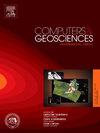Controlled-source electromagnetic signal detection using a hybrid deep learning model: Convolutional and long short-term memory neural networks
IF 4.4
2区 地球科学
Q1 COMPUTER SCIENCE, INTERDISCIPLINARY APPLICATIONS
引用次数: 0
Abstract
Controlled-source electromagnetic (CSEM) method using a periodic transmitted signal source suppresses random noise by superimposing and averaging the recorded signal over multiple periods. However, it still faces great challenges in strong interference environments. Here we present a CSEM signal detection method based on a hybrid architecture of convolutional neural network (CNN) and long short-term memory neural network (LSTM). Our method improves the quality of the recorded signal by filtering out all the noise periods and retaining the useful signal periods. The core lies in combining the spatial feature extraction capability of CNN with the time series modeling capability of LSTM, which can deeply excavate the feature differences between noise and CSEM useful signal. Meanwhile, a classification model of signal and noise is constructed using a large-scale training dataset. This hybrid model exhibits superior performance compared to other deep learning models such as CNN or LSTM. Also, we propose a novel signal detection mechanism that not only maintains the periodicity of CSEM signal, but also greatly enhances processing efficiency. The results of synthetic and measured data demonstrate that our method can obtain useful signals from CSEM data containing different noise types and significantly improve the quality of sounding curves. In particular, our method is useful for CSEM signal detection in strong interference.
使用混合深度学习模型的可控源电磁信号检测:卷积和长短期记忆神经网络
控制源电磁(CSEM)方法采用周期发射信号源,通过对记录信号在多个周期内的叠加和平均来抑制随机噪声。然而,在强干扰环境下,它仍然面临着很大的挑战。本文提出了一种基于卷积神经网络(CNN)和长短期记忆神经网络(LSTM)混合架构的CSEM信号检测方法。该方法滤除所有噪声周期,保留有用的信号周期,提高了记录信号的质量。其核心在于将CNN的空间特征提取能力与LSTM的时间序列建模能力相结合,能够深度挖掘噪声与CSEM有用信号之间的特征差异。同时,利用大规模训练数据集构建了信号和噪声的分类模型。与CNN或LSTM等其他深度学习模型相比,该混合模型表现出优越的性能。此外,我们还提出了一种新的信号检测机制,既保持了CSEM信号的周期性,又大大提高了处理效率。合成数据和实测数据的结果表明,该方法可以从不同噪声类型的CSEM数据中获得有用的信号,显著提高了测深曲线的质量。该方法特别适用于强干扰条件下的CSEM信号检测。
本文章由计算机程序翻译,如有差异,请以英文原文为准。
求助全文
约1分钟内获得全文
求助全文
来源期刊

Computers & Geosciences
地学-地球科学综合
CiteScore
9.30
自引率
6.80%
发文量
164
审稿时长
3.4 months
期刊介绍:
Computers & Geosciences publishes high impact, original research at the interface between Computer Sciences and Geosciences. Publications should apply modern computer science paradigms, whether computational or informatics-based, to address problems in the geosciences.
 求助内容:
求助内容: 应助结果提醒方式:
应助结果提醒方式:


